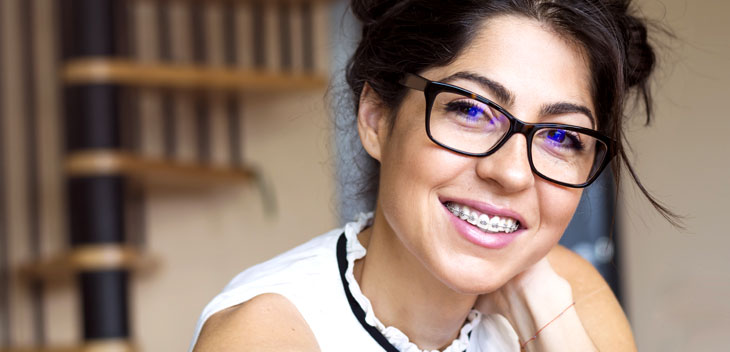While orthodontic treatment can be super exciting — if everything goes to plan, straight teeth could be right around the corner! — it’s also a potentially nerve-wracking experience. We put together a list of some of the most common concerns about orthodontic treatment, so you can find out exactly what to expect with new braces.
- How are braces put on?The exact process of getting braces depends on what type of braces you’re getting. For example, the process for Invisalign is a little different than the process for traditional braces, since the structure of the devices is totally different. However, the basic steps for ceramic and metal braces is always the same:
- First, the orthodontist will prepare your mouth for the procedure by cleaning your teeth.
- Then, bonding glue will be applied to your teeth.
- Next, the brackets (ceramic or metal squares) are attached to your teeth.
- Finally, the archwire will be placed in the brackets and secured with elastic bands.
- How long does it take to get braces?According to the American Association of Orthodontists (AAO), the process of getting braces normally lasts around 90-120 minutes, although this is something that’s going to be different for every patient. If you have severe orthodontic problems, it’s possible that the procedure will take a little longer.
- Aren’t braces really expensive?Ultimately, this is dependent on a range of factors. Orthodontic fees are directly related to the complexity of your treatment and the severity of your orthodontic problems. However, there are multiple ways to pay for braces, so you almost certainly won’t need to pay the whole sum out of pocket. Dental insurance, flexible savings accounts, and health savings accounts can make up the difference.
- Does the process of getting braces hurt?After your braces have been placed on your teeth, you will feel mild discomfort for about a week. However, most people adjust to their braces after a month or so, and after about six months, you may not notice them at all. Plus, there isn’t any pain to worry about when you actually get your braces put on. When the orthodontist secures your braces, you may experience some pressure. And while this pressure may take a little while to get used to, it isn’t a painful experience.
- Do I need to change my diet?Your dentist will recommend following a diet that consists mainly of healthy foods that are easy to chew during your orthodontic treatment. That means that softer foods like yogurts, soups, stews, scrambled eggs, pasta, and smoothies are a great choice. You should generally stay away from crunchy, chewy, or sticky foods like hard candies, nuts, taffy, and crusty bread. Oh, and it’s probably a good idea to put sugary and acidic drinks on the backburner for the duration of your treatment. There’s a real danger that they’ll cause decalcification, which can lead to tooth decay and increased sensitivity.
- How long do I need to wear braces for?The length of time that you need to wear braces is determined on a case-by-case basis by your orthodontist, with key factors including age and the severity of your orthodontic issues. In general, you will need to wear your braces for between 18 months and three years. That might sound like a long time, but when you consider those glistening, straight white teeth at the end of the road, it’s a pretty small price to pay!
For more advice on what to expect with braces, talk to your orthodontist!
Medically reviewed by Dr. Natalie Pennington, DDS, March 2019

